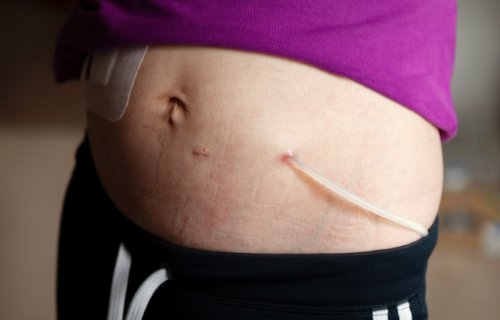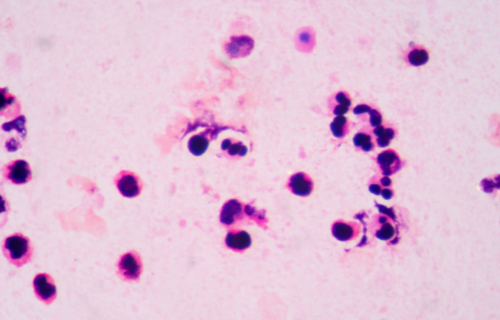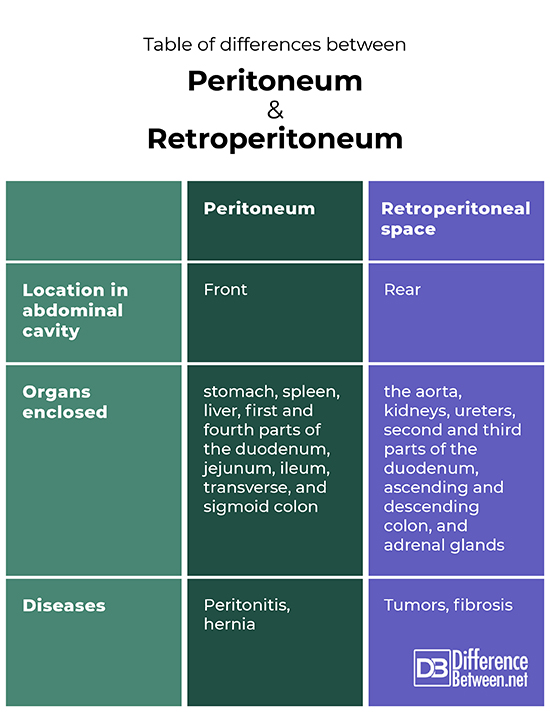Difference Between Peritoneum and Retroperitoneum

While the peritoneum and retroperitoneum are both located in the abdominal cavity that stretches between the pelvic floor and diaphragm and the vertebrae and abdominal muscles, the retroperitoneum is more accurately described as a space that lies behind the posterior sheath of the peritoneum at the back of the abdominal cavity (Ajun Kalra et al.), while the peritoneum is a large serous membrane consisting of two layers, the parietal peritoneum and visceral peritoneum, that enclose the intraperitoneal organs.
Intraperitoneal organs, or organs within the peritoneum, include the stomach, spleen, liver, first and fourth parts of the duodenum, jejunum, ileum, transverse, and sigmoid colon. Retroperitoneal organs, or organs located within the retroperitoneal space, include the aorta, kidneys, ureters, second and third parts of the duodenum, ascending and descending colon, and adrenal glands (MedlinePlus a & b).

What are the peritoneum and retroperitoneal space?
The peritoneum is a complexly arranged, continuous, and large serous membrane (Giovanna Bertolini) supported by a thin layer of fibrous and connective tissue that lines and supports abdominal organs as well as facilitates their lymph, blood, and nerve flow. It consists of two layers and contains about 50—100 ml of slippery serous fluid that reduces friction between the layers and allows the organs contained within to glide freely. The outer layer is the parietal peritoneum, which is fixed to the abdominal and pelvic walls (Temel Tirkes et al.) The thinner, inner layer is the visceral peritoneum in which the organs are wrapped (Jana Vaskovic).
The retroperitoneum is a space located behind the peritoneum with the lateral boundary defined by the ascending and descending colons (H. Abele). The parietal peritoneum separates the peritoneal and retroperitoneal spaces. Much of the abdominal wall musculature, lymphatics, and fat are located in the retroperitoneal space (MedlinePlus-a).
Diseases of the Peritoneum and Retroperitoneal space
Most peritoneal and retroperitoneal diseases originate in the organs that they protect, support, and nourish. Diseases located in the peritoneum, although uncommon, include peritonitis, hernias, and complications caused by peritoneal dialysis.
- Peritonitis: Normally, the peritoneal space contains up to 100 ml of serous fluid. Various conditions, such as cirrhosis or the leaking of fluid from the gastric system or pancreas increase the peritoneal fluid, causing irritation and inflammation of the peritoneum, called peritonitis. Other causes may be infection from a puncture in the abdominal cavity, rupture of an organ, muscular hemorrhages, the presence of foreign bodies with abscess formation (Giovanna Bertolini) or infections after abdominal surgery (MedlinePlus-a).
- Hernias: Hernias form when fascia (a thin sheath of fibrous tissue enclosing a muscle or organ) weaken or fail and abdominal and pelvic contents protrude. Two kinds of hernia involve the peritoneum: Internal abdominal hernias are protrusions through the peritoneum or mesentery, and direct inguinal hernia are hernia sacs formed by the parietal peritoneum protruding through weakened or injured abdominal wall muscle (Giovanna Bertolini).
- Peritoneal dialysis: Because the peritoneum acts as filter to remove waste products from the blood, when the kidneys fail, draining the peritoneum can be used for dialysis. It involves minimal disruption to a person’s daily life but requires the person is able to take care of themselves because of the risk of infection (MedlinePlus-b). The peritoneum can also be used to treat hydrocephalus with a ventriculoperitoneal shunt that transfers excess cerebrospinal fluid to the peritoneum where it is reabsorbed by the body (Arjun Kalra et al.). This procedure also involve a risk of infection.
Disease in the retroperitoneal space include tumors and retroperitoneal fibrosis.
- Tumors: Retroperitoneal tumors may be primary or secondary. Primary retroperitoneal masses originate in the retroperitoneal space outside the retroperitoneal organs. They derive from tissues contained in the space. Secondary retroperitoneal tumors are the result of tumors of the retroperitoneal organs (Giovanna Bertolini).
- Fibrosis: Retroperitoneal fibrosis is a rare condition that occurs due to inflammation and scar tissue developing within the retroperitoneal space that restricts blood flow to the lower body or the organs contained within the retroperitoneal space. Researchers suggest the cause may be the immune system reacting to blood vessels that have been damaged by a fatty buildup, certain drugs, infections, or trauma (MedlinePlus-c).
Table of differences between peritoneum and retroperitoneum

Summary
The peritoneum and retroperitoneal space are differentiated by their location and the organs they enclose, support, and nourish. The peritoneum is a double-layer sheet that protects the organs in the abdominal cavity, while the retroperitoneal space is located behind the peritoneum and separated from the former by the parietal peritoneum. The peritoneum is vulnerable to peritonitis, or an irritating accumulation of excess fluid, and hernias due to weakening of the abdominal muscles as well as infection when used for dialysis. The retroperitoneal space is vulnerable to tumors and fibrosis, or scar tissue that constricts and limits the flow of blood to organs contained within the space.
FAQ
Is peritoneal the same as retroperitoneal?
Peritoneal and retroperitoneal refer to different spaces in the abdominal cavity and the organs supported, protected, and nourished in those spaces. The retroperitoneal space and organs are found behind the peritoneal space with only the anterior wall covered by the parietal peritoneum (Jana Vasković).
What separates the peritoneum from the retroperitoneum?
Structures that that lie between the parietal peritoneum and the posterior wall of the abdominal cavity are classified as retroperitoneal (Seth B. Hayes and Levi), suggesting it is the parietal peritoneum that separates the peritoneum from the retroperitoneal space and the organs it contains.
Is the peritoneum retroperitoneal?
The peritoneum is the two-layered serous membrane that forms a lining in the abdominal cavity, and the parietal peritoneum encloses the peritoneal space and the organs that fill it. Retroperitoneal refers to the space containing the organs found behind the peritoneum and separated from the peritoneum by the parietal peritoneum.
- Difference Between Ecchymosis and Erythema - August 15, 2022
- Difference Between Autobiographical Memory and Episodic Memory - August 1, 2022
- Difference Between Biological Drive and Social Motive - July 30, 2022
Search DifferenceBetween.net :
Leave a Response
References :
[0]Abele, H. Atlas of Gynecologic Surgery. Stuttgart: Thieme, 2014.
[1]Arjun, Kalra et al. Anatomy, Abdomen and Pelvis, Peritoneum. Treasure Island, FL: StatPearls, 2021.
[2]Bertolini, Giovanna. “The Peritoneal Cavity, Retroperitoneum, and Abdominal Wall.”
[3]Body MDCT in Small Animals, 2017, May 25. https//doi.org/10.1007/978-3-319-46904-1_10
[4]MedlinePlus-c. “Retroperitoneal fibrosis.” Medical Encyclopedia. 2022. https://medlineplus.gov/ency/article/000463.htm.
[5]Hayes, Seth B. and Allan D. Levi. “Surgical exposure/anatomy of the lateral lumbar spine and plexus,” Chapter 12. In: Nerves and Nerve Injuries, Vol. 2, p. 169-178, 2015. https://doi.org/10.1016/B978-0-12-802653-3.00061-0
[6]Trikes, Temel et al. "Peritoneal and Retroperitoneal Anatomy and its Relevance for Cross-Sectional Imaging". RadioGraphics vol. 32, no 2, March 2012, pp. 437–451. https//doi.org/10.1148/rg.322115032]
[7]Jana Vascovic, “Peritoneum and Peritoneal Cavity.” Ken Hub, 2022. https://www.kenhub.com/en/library/anatomy/the-peritoneum
